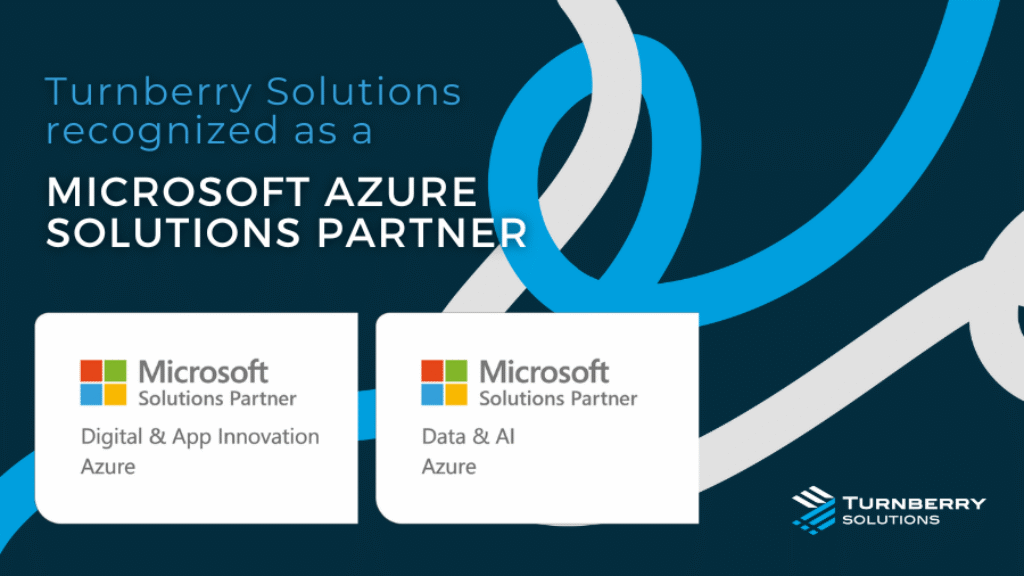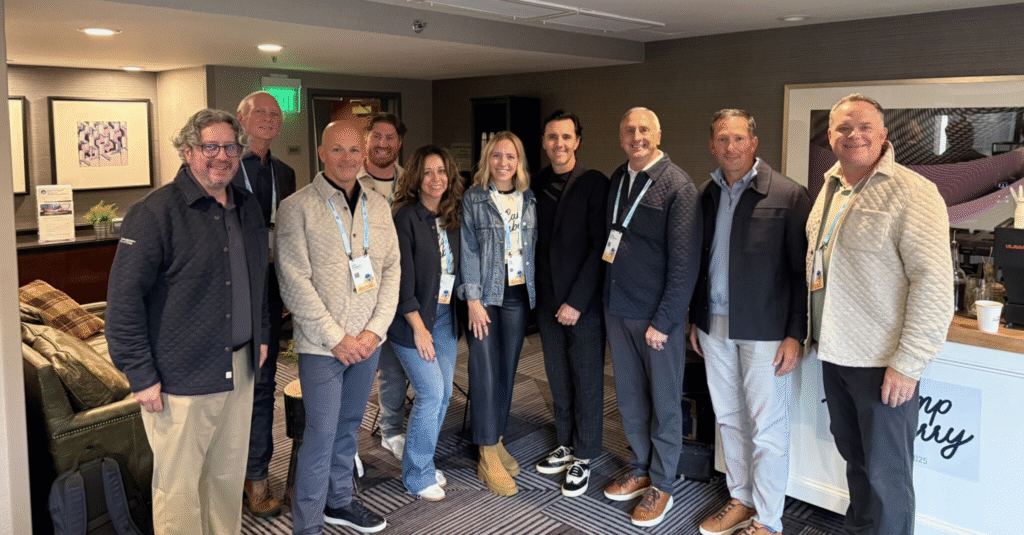Making innovation work

Introduction
Fast, informed decisions are the key to innovation at large companies.
They only happen when a team can swap ideas at speed, lock onto a shared goal, and refine their plan based on real-world feedback.
Fast, informed decisions are made up of two factors.
- The quantity of feature decisions you need to make.
- The impact of those feature decisions.
In this guide, you’ll discover that making fast, informed decisions is about pairing the right team with the appropriate phase of the innovation life cycle.
Let’s begin with an overview of when to make fast, informed decisions in the typical innovation life cycle at large companies.
The typical innovation life cycle at large companies

At a typical large company new capabilities travel a three-stop path:
- Strategize the vision
- Explore the options
- Implement the solution
Strategize the vision
The first step in the life cycle is to strategize the vision. This is typically an annual process (some companies may do it more frequently/continuously) where you focus on refreshing the company’s strategy and determining new capabilities to bring to your customers.
The goal of this phase is to leave with a shared vision and confidence to move forward because everyone knows where you’re headed and why it matters to your company and customers.
Explore the options

With the vision set and new capabilities defined, you explore build options.
However, before you explore build options, you want to make sure to understand the current capabilities that exist today and why they exist. Specifically, you want to make sure to deeply understand the problem you’re aiming to solve, the users, and the current technologies used by those users.

You enter this phase with a low level of understanding of what features to build and how to build the features to create new capabilities for your users. Therefore, the quantity of feature decisions you need to make is high.
You’re also starting with a blank slate, so each decision made here has a big impact on future decisions, so ruling out bad ideas is critical.

To make fast, informed decisions in this phase, you test ideas, size various efforts, and catch tech hurdles early. This is a timeboxed effort, so the cost is typically expensed on the income statement of the current year. This phase is all about fast experimentation and feedback to help you narrow in on your larger project plan and scope. The project plan is a reflection of your increased level of understanding gained in this phase.
The project plan and scope are the roadmap to the user’s future experience with the new capabilities and the level of effort to build the features to bring that experience to life. This leads to a decision on whether you trigger the bigger investment to build out these new capabilities.
Implement the solution

If you decide to move forward and build the new capabilities, you’ll enter the implement phase. This work typically happens over multiple years, so the work is capitalized because you’re creating a long-lived asset.
This phase breaks into three parts:
- Initial MVP
- Release 2
- Subsequent releases
Initial MVP
The goal of this part of the Implement phase is to deliver the very first version of your new capabilities that your customers can touch. In this phase, you’re focused on baseline features your customers expect, performance features that differentiate you from current solutions, and potentially a few thoughtful enhancements that elevate the overall experience.
Armed with the feedback from the experiments you conducted, and proof-of-concepts created in the explore phase, you have confidence that you’re delivering the most critical features to your customers. However, victory can’t be claimed until you get feedback from your wider customer base.
Although the experiments are behind you, this stage is your first attempt at crafting the features that bring the capabilities to life that you outlined in the Strategize phase.

In this stage, decision volume stays high because there’s a gulf between a proof-of-concept and a customer-facing product. These decisions also have a lasting, strong impact because they lay the foundation for subsequent features.
Release 2
After MVP, you’re focused on iterating existing capabilities based on customer feedback. In this phase, you’re fixing bugs, adding feature gaps that didn’t make it into the MVP, and automating your development process.
You’re also figuring out how to build the next set of features given how you built out the initial ones. This means you’ve made a lot of impactful decisions, so the number of decisions needed drops as does their impact.

Because the decisions needed are reduced, you can start to assess cost reduction opportunities as you have confidence in the overall solution you’ve created for your customers.
Subsequent releases
For subsequent releases, you’re releasing more features and updating existing ones to enhance the existing capabilities. Your focus is on the next features to build: complementing existing features or replacing current ones.

Given how far you are in the innovation life cycle, the number of decisions remaining is low, as is their impact. In this part of the Implement phase, your past decisions constrain your future feature decisions.
Cost also becomes the overriding factor as you seek to optimize resources to ensure sustainability and profitability.
Team decisions & where to innovate
Now, let’s discuss your team options and where it makes sense to innovate, given the need for fast, informed decisions in the different phases of the innovation life cycle.
When it comes to where to innovate, there are two questions to ask:
- What team options do you have available to you?
- Where in the innovation life cycle are you operating?
Typical team options and characteristics

Let’s first talk about the typical team options and their characteristics.
Onshore team of senior talent

The primary advantage of an onshore team is that they benefit from better communication and collaboration due to cultural alignment and similar time zones to stakeholders and customers. This benefit is accelerated by building a team with senior talent. With all team members being senior professionals, the team can make fast, quality decisions and handle complex challenges efficiently. However, cost can be challenging since the team is experienced and onshore, leading you to want to use this type of team in the early phases of the innovation cycle.


In the Explore phase and the MVP part of the Implement phase, there is a high need for stakeholder alignment and user involvement, creating a highly iterative and collaborative environment. Given these characteristics, this type of team is best suited for work in the Explore phase and the MVP part of the Implement phase.
Onshore team of senior & junior Talent

An onshore team made up of both senior and junior talent offers similar advantages to a team composed entirely of senior talent, including strong communication and collaboration due to cultural alignment and shared time zones with stakeholders and customers.
This team setup can leverage the experience of senior team members while also incorporating the fresh perspectives of junior team members. This balance can foster mentorship and development opportunities for junior professionals, contributing to a growth-oriented team environment.
However, the ability to make fast, quality decisions and handle complex challenges decreases as there is a learning tax paid to upskill junior talent.

In Release 2, part of the Implement phase, the number of decisions and their impact decreases, and you can start to assess cost reduction opportunities.
Leveraging junior talent to make these less impactful decisions while being mentored by senior professionals is an effective way to reduce costs while keeping the quality of your capabilities high.
Offshore team

An offshore team, all located far from their stakeholders and customers, greatly reduces the ability to make fast, quality decisions because the feedback loop between the team and stakeholders and customers is so high. There could also be cultural differences that decrease the ability for collaboration and make it hard to understand each other. However, offshore teams shine in cost.
When you create subsequent releases, the need for fast, informed decisions is very low, so moving routine work offshore after Release 2 can lift ROI and ensure the sustainability and profitability of your initiative.
Conclusion
Innovation is a series of fast and quality decisions. To make fast and quality decisions, it’s important to match the work being done with the appropriate type of team.
Early in the Innovation Life cycle, the work is fast and fluid, and should be done with experienced people close to stakeholders and customers.
As the work becomes less fast and fluid, junior talent can be brought in to reduce costs and upskill your workforce. Eventually, the work can move farther away from the stakeholder and customer as the need for fast quality decisions subsides, and the focus shifts to long-term sustainability and profitability.
Continue reading

Turnberry earns Microsoft Azure Solutions Partner designations in Data & AI and Digital & App Innovation
Turnberry Solutions is proud to announce that we have earned Microsoft Azure Solutions Partner designations in…

Dreamforce 2025, from the lens of Turnberry
At Dreamforce 2025, Salesforce users from every industry arrived ready to explore the next wave of…

Q3 2025 compliance & remediation update
Introduction Welcome to our Turnberry compliance and remediation update for Q3 2025. Each quarter, our C&R…